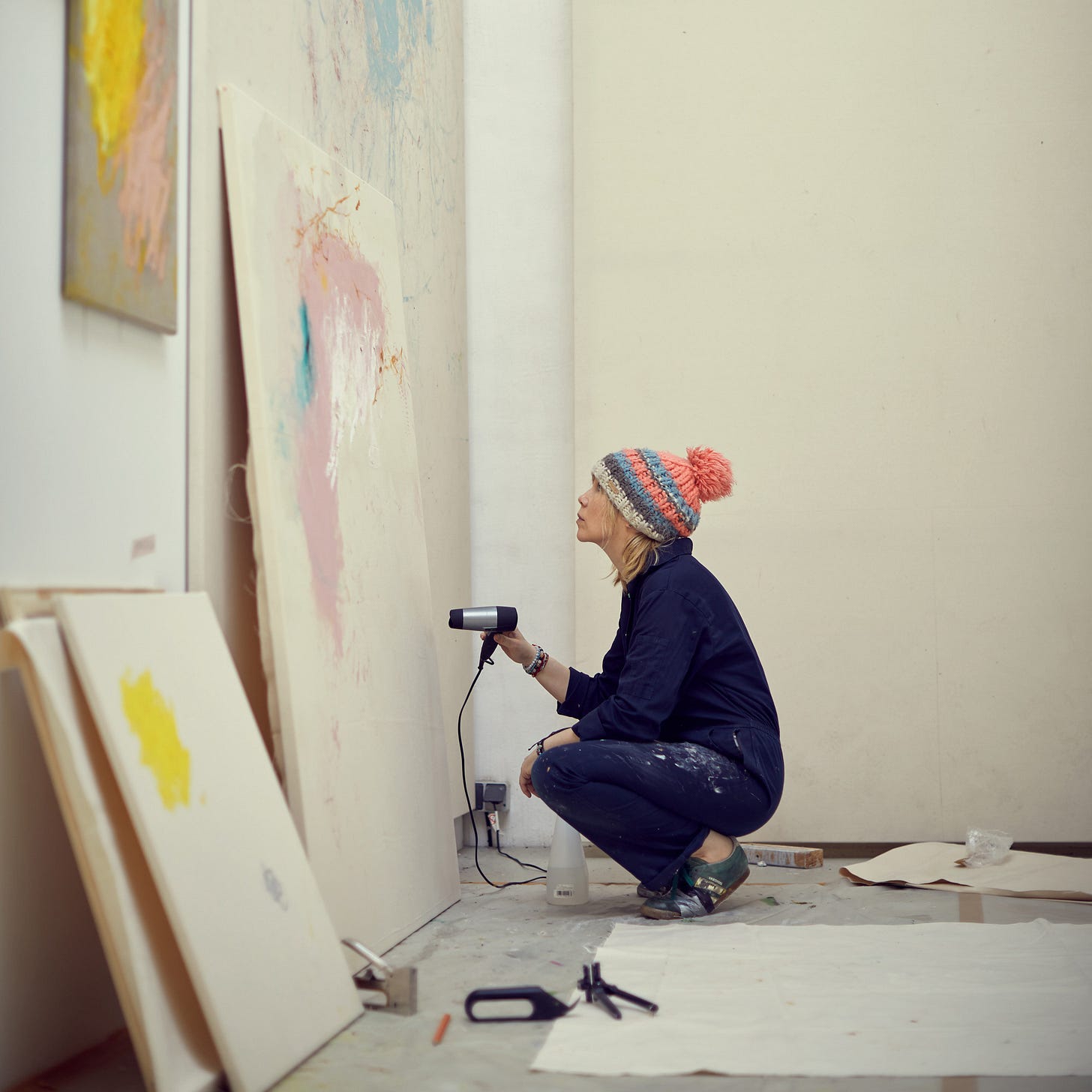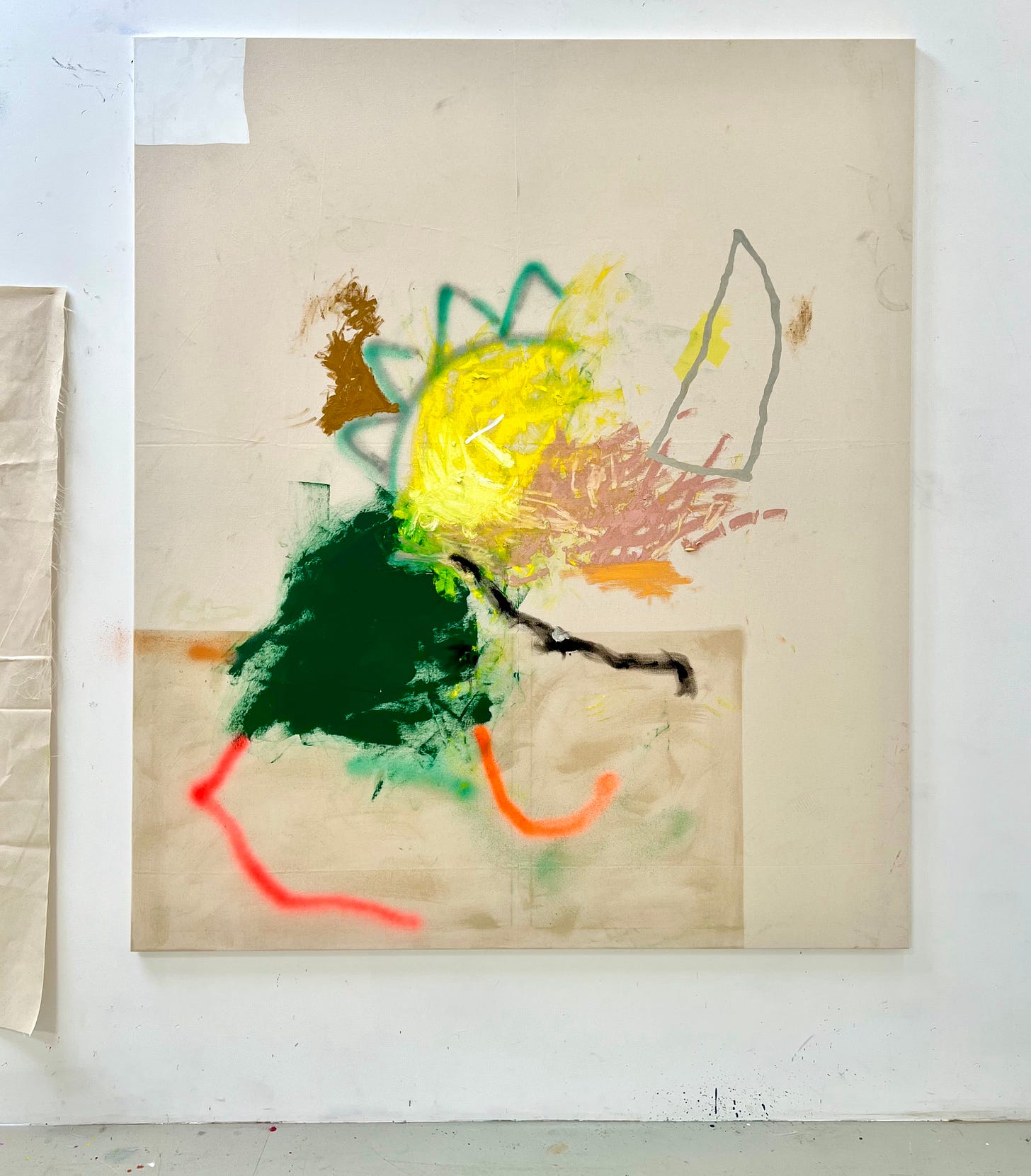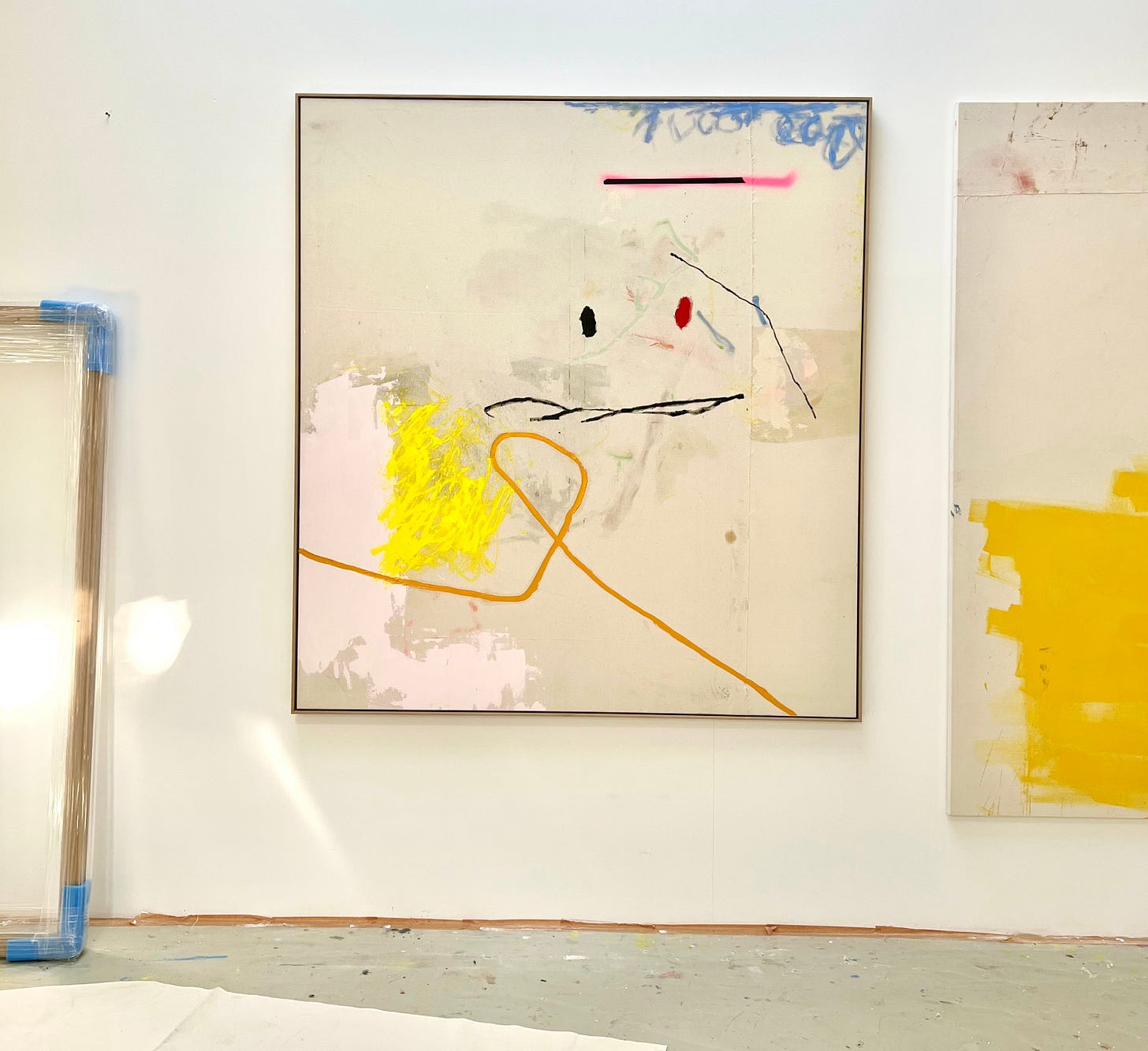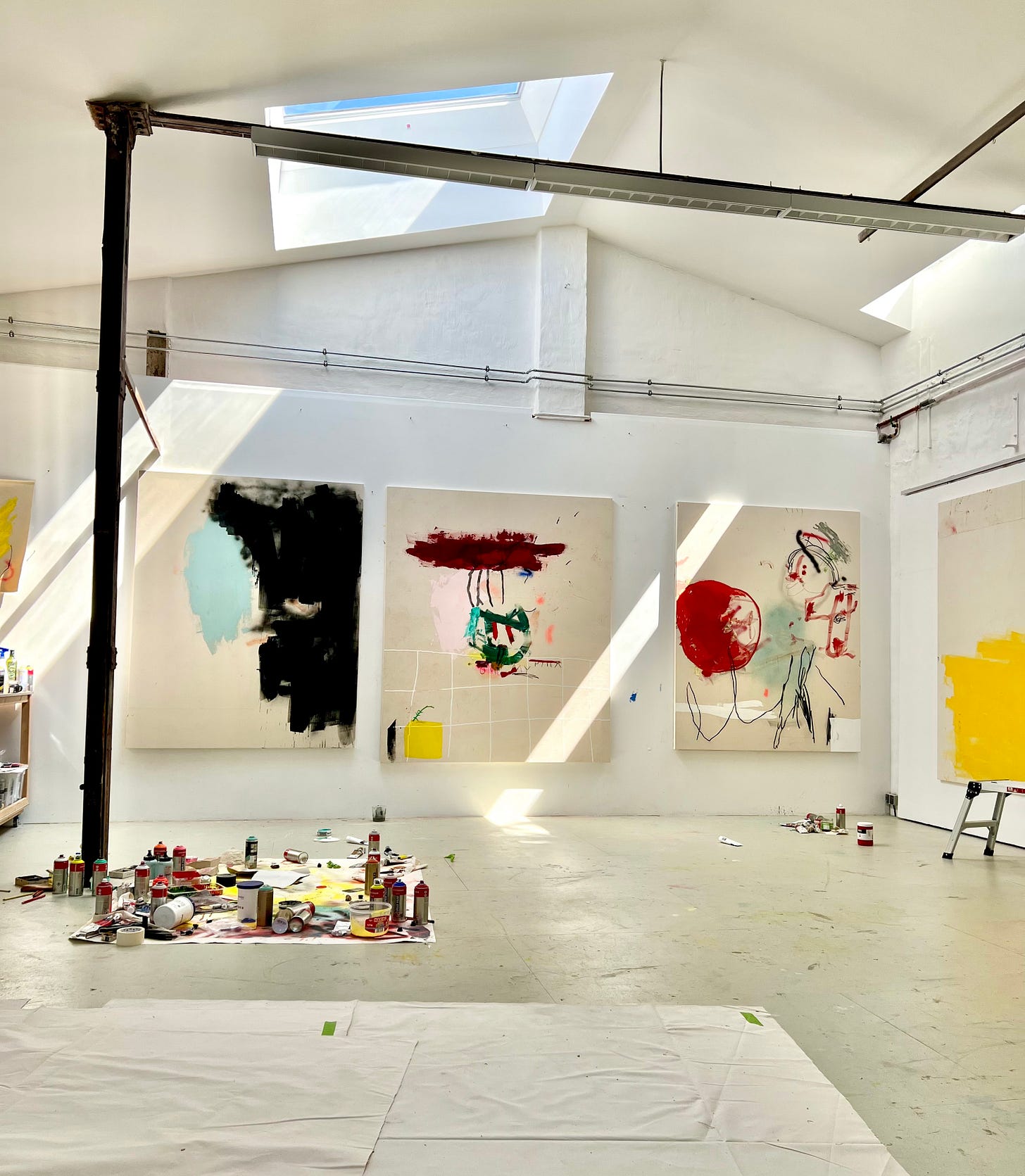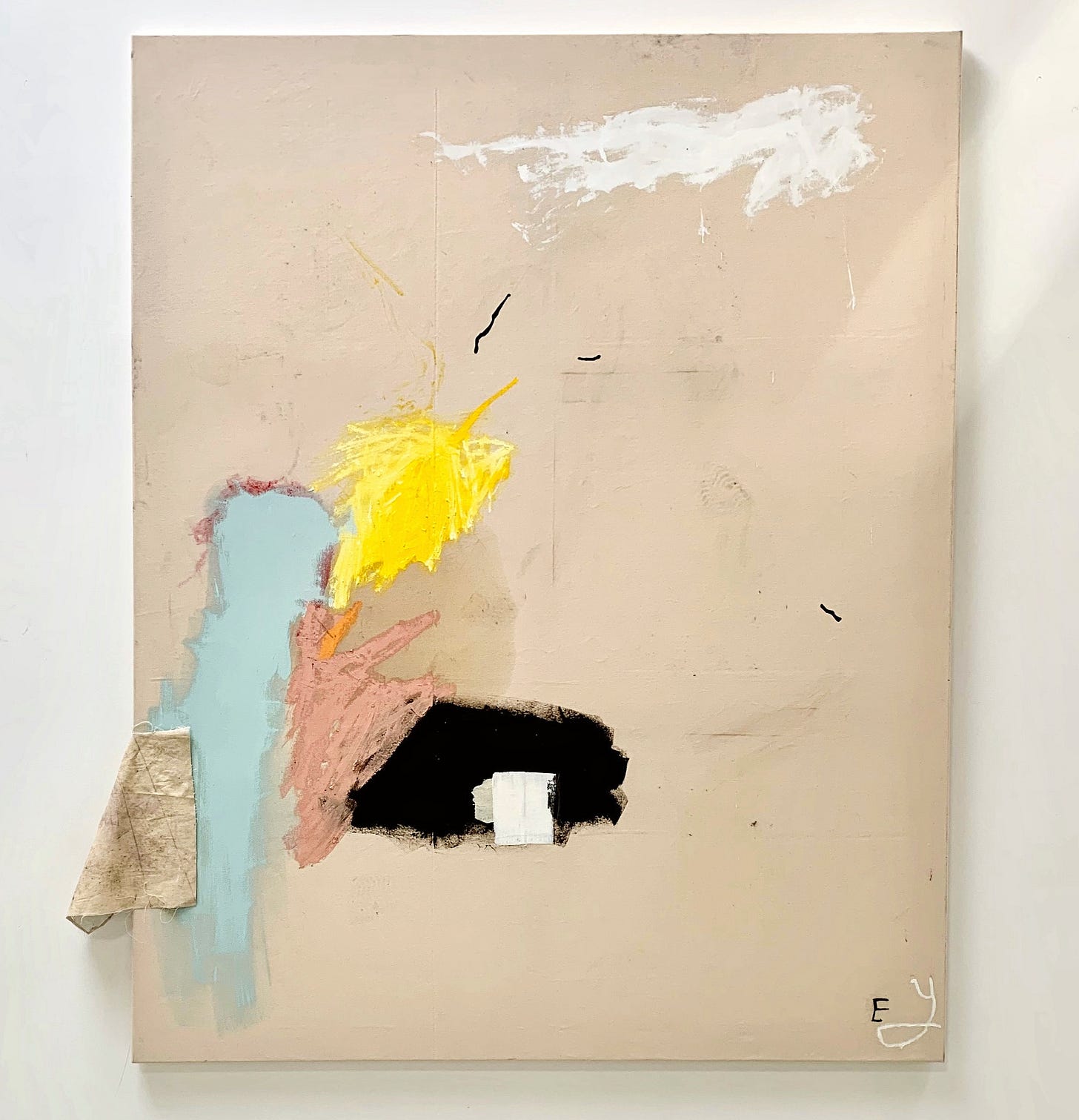Sometimes I look at a painting and think, That looks like it was fun to make. I find myself increasingly excited by paintings that reflect the idea of play, of enjoying the process, as opposed to reflecting a kind of laboured fretting and fussing. Whenever I’ve struggled in my own work, I come back to this idea of following the fun and enjoying the process. I’ve found it’s a simple yet effective way to shake out of creative dips.
Jenny Brosinski is an artist who exemplifies the idea of fun in art-making. I don’t know for a fact that she has fun when she makes her characterful paintings, but it certainly looks that way. Her work is lively yet measured, with bright pops of colour, smears of paint, but also large expanses of raw canvas that create a unifying tone. Her marks feel urgent and honest, as if she’s straight in there with no formula for how one mark will lead to the next. Her pieces appear simple at first but something in the composition holds my attention. To me, there’s just something very human and messy and fun in Jenny’s work.
Following Jenny on Instagram, and seeing her enormous studio space, I got the sense of a big kid in a playground with all the freedom in the world. And so, I was excited to ask the Berlin-based artist about the seeming joy behind her work, which spills over into the viewing experience. Enjoy the interview!
Hey Jenny. I sometimes notice forms that look like monsters or strange creatures in your work. Where do these things come from? Do you have loads of fun reference materials or is it all straight from your mind?
That's a really good question. It's probably a mix. As I paint without a plan - I start with a spot, a gesture, and then one thing leads to another. But I'm certainly influenced by a lot of what I read. I just like discovering, including in the work of my colleagues... Even as a child, I often discovered creatures in clouds or wallpaper patterns that would then disappear again.
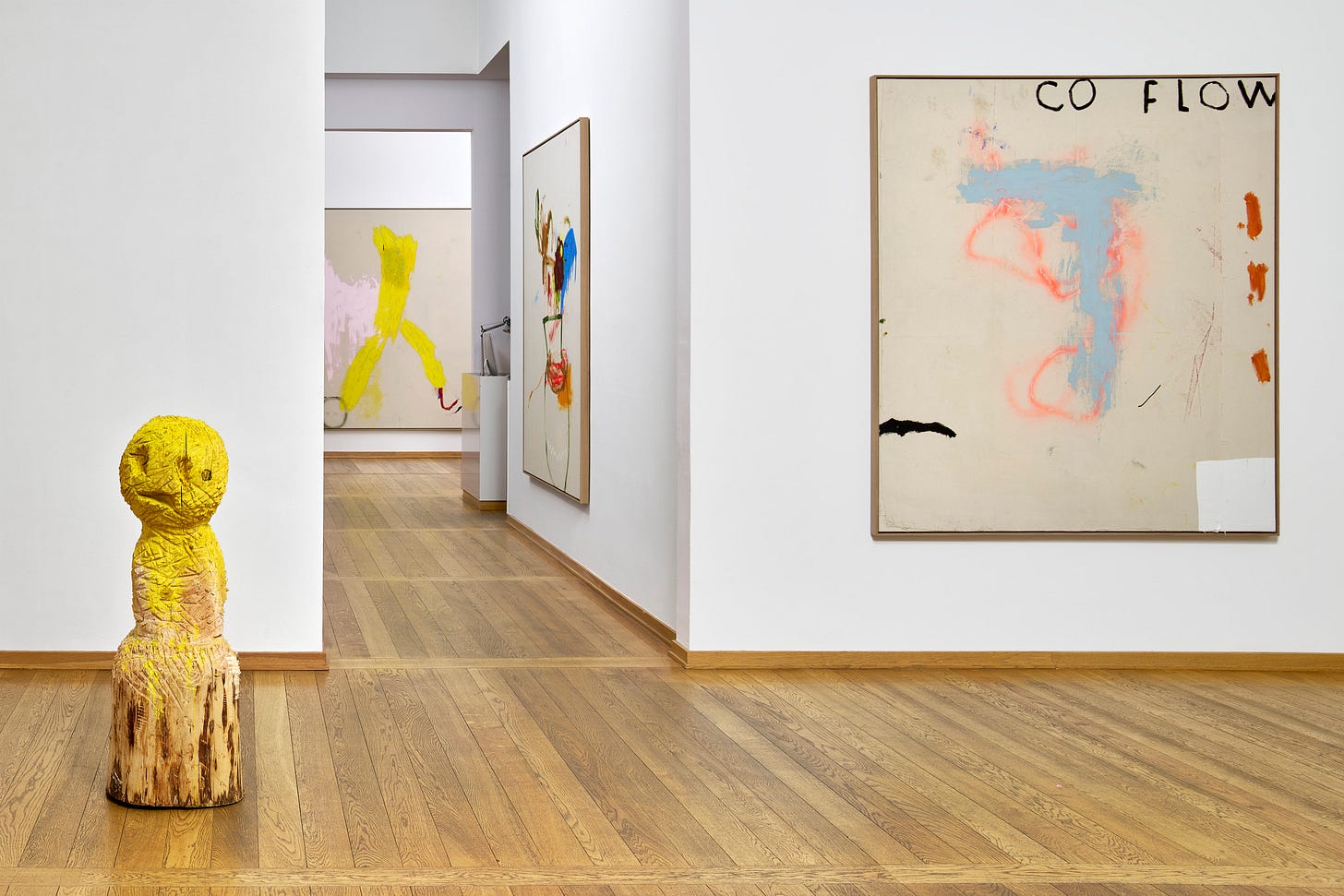
You mention being influenced by what you read - what sort of stuff are you reading
Actually, a lot of art history and things about contemporary positions for sure - interviews, novels. Indeed quite mixed up when I think about it more closely.
One of the things that struck me in your paintings was the perfect balance of marks. There’s thin marks, thick marks, fuzzy marks, sharp marks and smudges. What can you say about this variety of marks and how you bring them together into a composition?
Perfect imperfection is perhaps one of my goals :) There's a lot of off-balance in my paintings, which is then somewhat compensated for by the right stroke or gesture in the right place. Knowing, or rather, feeling, and then deciding which gesture follows which stroke or spot is part of my painting.
Does a piece usually come together fairly quickly, or do you put some pieces aside and come back to them when you think you know how to finish them?
It varies a lot. Sometimes I finish a painting in one go. Sometimes it takes a while. That's why I always work on several paintings in parallel.
It looks like you’re working on raw canvas, which provides a lovely muted cream to work on. What do you love about it and why do you choose it over the standard white primer?
I like materials, surfaces that are open and can absorb something, into which something can suck into and leave its mark—dig itself in. Gesso or primer feels like it separates me from the material; a primed canvas, in its beautiful perfection, somewhat intimidates me, bores me.
It also looks like you love to work big. What do you love about enormous paintings and the experience of making them?
When I push myself beyond my own height or wingspan, I experience things outside my comfort zone. I don't believe in limitations, and I like paintings that become bodies or entire rooms.
I’m sure your large studio space helps, and it looks amazing. What’s your normal routine there like, in terms of when you like to work, how you work best, whether you have certain music playing, etc.?
I do listen to music during some steps of my work, but generally I try to avoid music, at least while painting. It's either quiet or I listen to movies... I like something long and familiar... it just goes in one ear and out the other. I almost never work at night. My best focus is in the morning until about 2pm. After that, I become at least more unfocused.
Lastly, I have to ask about the idea of fun, which feels so crucial in your paintings. What can you tell me about the role of fun and play in your work, and why it’s important to you?
Fun must never be forgotten in all the seriousness. Colour has something playful and sensual about it in itself. When something seems simple and then turns out to be more complex than expected, that interests me.
Follow Jenny on Instagram: @jenny_brosinski
Things on Our Radar This Week
We wish we could see the latest group show at Anton Kern, which features works by Joe Bradley, Rose Wylie and loads of modern greats (there’s a cool video tour here)
David Zwirner has a pod delving into the lesser known history of the legendary Black Mountain College
Edinburgh is opening a museum dedicated to Palestinian art
The Best Painting Shows in London This Month
Rose Wylie at David Zwirner (ends 23 May)
Jhonatan Pulido’s ‘Reparación’ at Alma Pearl (ends 17 May)
Sim Smith have an exciting group show (ends 19 April)
Tim Stoner at Pace (ends 12 April)
Thanks for reading, see you next time!
Oliver & Kezia xx
Palette Talk is free and we hope to grow with your support. If you’ve enjoyed reading, drop us a donation via PayPal…




